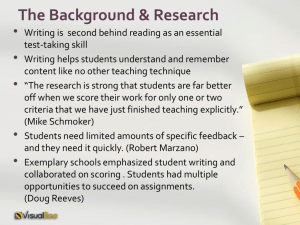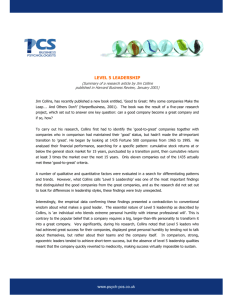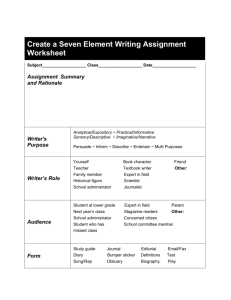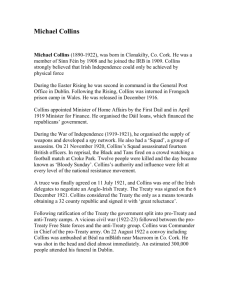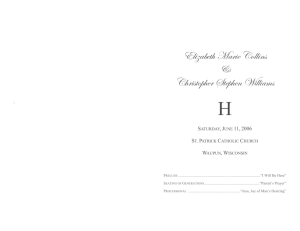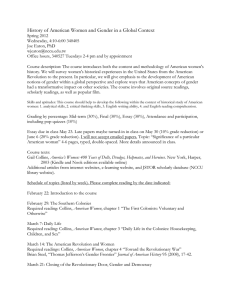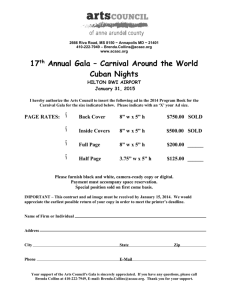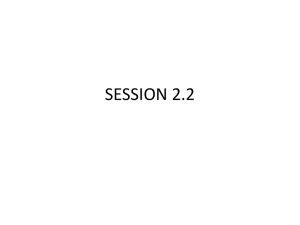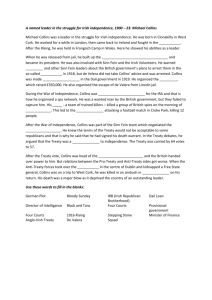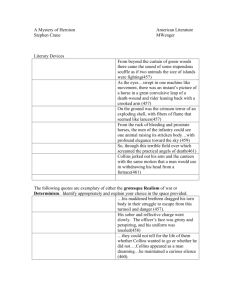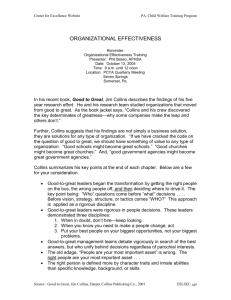Collins PP
advertisement
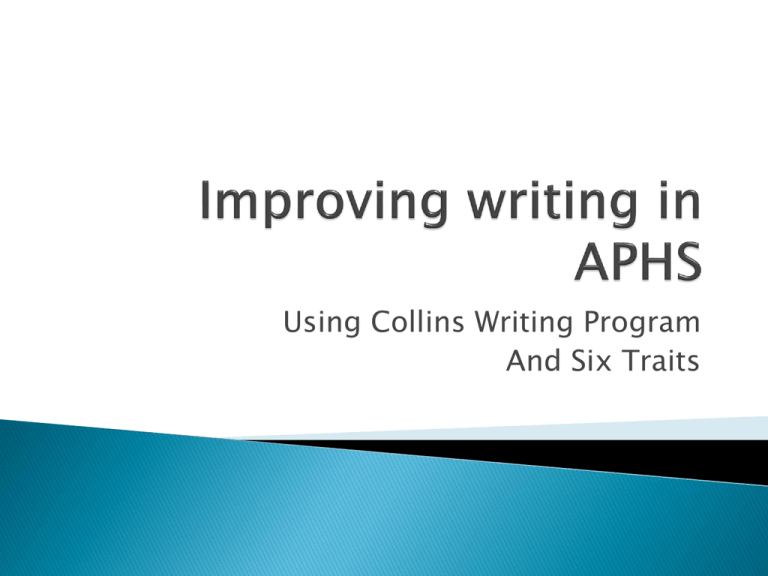
Using Collins Writing Program And Six Traits Essential question ◦Why is writing important? ◦How can I help improve writing for our students? In your group, take 30 seconds to answer each question Person one—answer first, then go to your left Looking at the data of HSPA, ◦ What are our students most deficient in Language Arts Literacy? ◦ How do our students compare with other students on New Jersey? The Collins Writing Program presents a model for writing-across-thecurriculum and writing to learn. Founder Dr. John Collins draws from extensive research and twenty years experience working with teachers and students to create a practical program that requires students to engage in curriculum content as they improve writing, thinking, listening, and speaking skills. A Writing to Learn approach helps students explore, engage in, and apply new information as they write. The Collins Program is designed to, “help teachers in all content areas achieve their goals by requiring students to think on paper. This is accomplished by using frequent, usually short, writing assignments to increase students’ involvement in lessons, check on their understanding of concepts, or promote their thinking about content.” (Collins) Students may be asked to Type One—Capture ideas Brainstorming, timed with a minimum number of items and lines Type Two-Respond correctly Shows the writer knows something about the topic—quiz or exit slip Type Three—EDIT for FCA’s—First draft Substantive content and calls for three specific focused correction areas Type Four—Peer edit—Second draft Read aloud Type Five—Published ERROR FREE—multiple drafts For types 1-3—skip lines with name in corner 3-4 FCA’s are listed on the page Collins Writing Program Five Types of Writing Type One writing gets ideas on paper — it's brainstorming. Type One is timed and requires a minimum number of items or lines to be generated. Questions and/or guesses are permitted. One draft Outcomes are evaluated with a check (√) or minus (-) Type Two writing shows that the writer knows something about a topic or has thought about the topic. It is a correct answer to a specific question. One draft Graded as a quiz EXIT slip Type Three writing has substantive content and meets up to three specific standards called Focus Correction AreasSM (FCAs). Revision and editing are done on the original. One draft (saved) Read out loud and reviewed to see if the draft completes the assignment, is easy to read, and meets standards set for the focus correction areas. Focus Correction AreasSM (FCAs) These are basic areas of evaluation Usually the three consists of ◦ Content ◦ Organization ◦ Grammar Emphasis on clearly specified writing criteria Development of individual writing style Promotion of content learning and critical thinking skills Improvement of organizational skills Selective, manageable approach to correcting student writing KEY BENEFITS Use a clear topic sentence and a strong conclusion Explain ideas with sufficient, relevant details Use content-specific vocabulary accurately Vary sentence beginnings and lengths Use end marks and commas correctly Include graphic illustrations with labels EXAMPLES FOUR ◦ Type Four writing is Type Three writing that is read aloud by someone else. ◦ Two drafts (saved) ◦ Writing is critiqued by a peer and revised by the author FIVE ◦ Type Five writing is error free and of publishable quality. ◦ Multiple drafts (saved) ◦ Published work 1. Ideas and Content concerns the focus on the main idea of the writing 2. Organization emphasizes the logical development of topic from beginning to end 3. Voice concentrates on a sense of a real person behind the words and a clear understanding of audience 4. Word Choice encourages varied and rich, powerful and engaging words 5. Sentence Fluency highlights the smooth flow of the text 6. Conventions examines mechanical correctness, including spelling, grammar & paragraphing 7. Presentation (optional trait) supports text and format that is legible and pleasing to the eye Type one ◦ In four lines, How can you incorporate wring in class? TYPE ONE Type Two ◦ In four lines, explain ◦ How type two writing can encourage active participation by all students? TYPE TWO Christine Type one—4lines 1_______________________ X_______________________ 2_______________________ X_______________________ 3_______________________ X_______________________ 4_______________________ Skip lines Christine Type 2—4lines 1_______________________ X_______________________ 2_______________________ X_______________________ 3_______________________ X_______________________ 4_______________________ Put which type and amount of lines in the heading Station one Learn Collins Station two For each type of writing Complete three examples Identify FCA’s that are essential for our students Station Three Go to Home page Find DeMarsico Writer’s workshop Explore websites on writing Please use netbooks Go to Home page Find DeMarsico Writer’s workshop Explore websites on writing Empower 3000 Find writing examples What are three type one prompts for your subject area? 1.________________ 2._________________ 3._________________ NAMES_________________ ____________________ What are three type two prompts that can be used in your subject area? 1.______________ 2._______________ 3._______________ SUBJECT_______________ 1.________________ 2.________________ 3.________________ 4._________________ 5.__________________ 6.__________________ 7.___________________ 8.__________________ grammar 1.________________ 2.________________ 3.________________ 4._________________ 5.__________________ 6.__________________ 7.___________________ 8.__________________ organization
